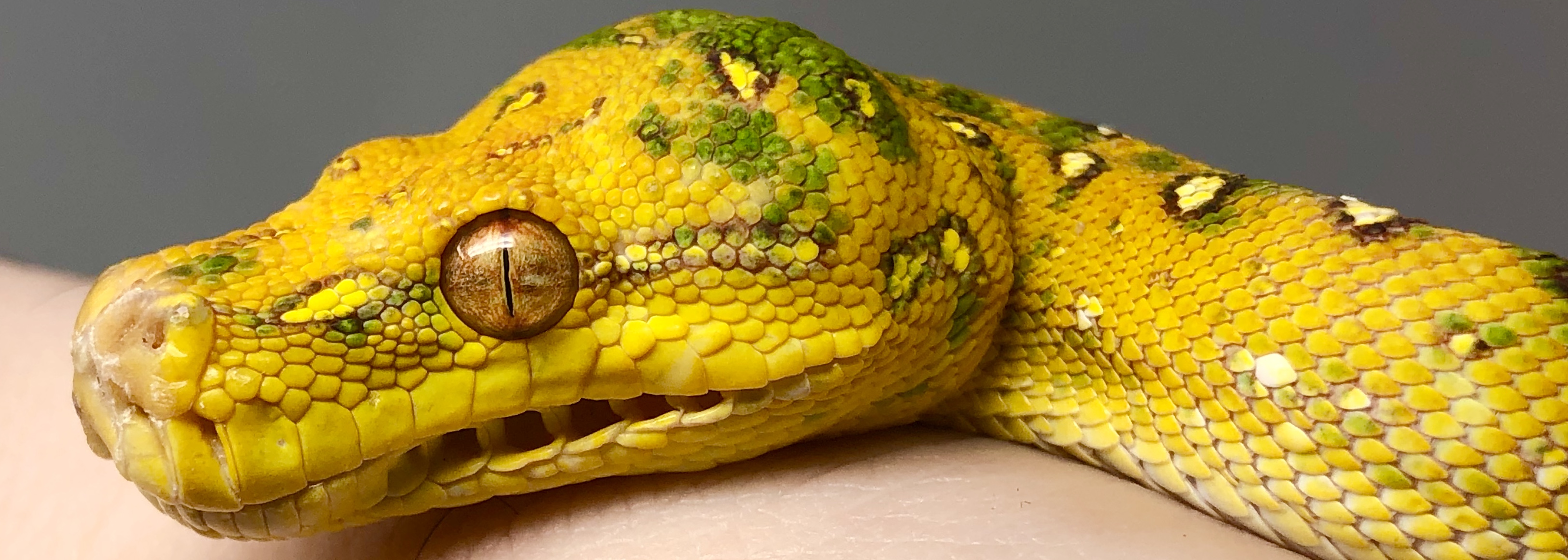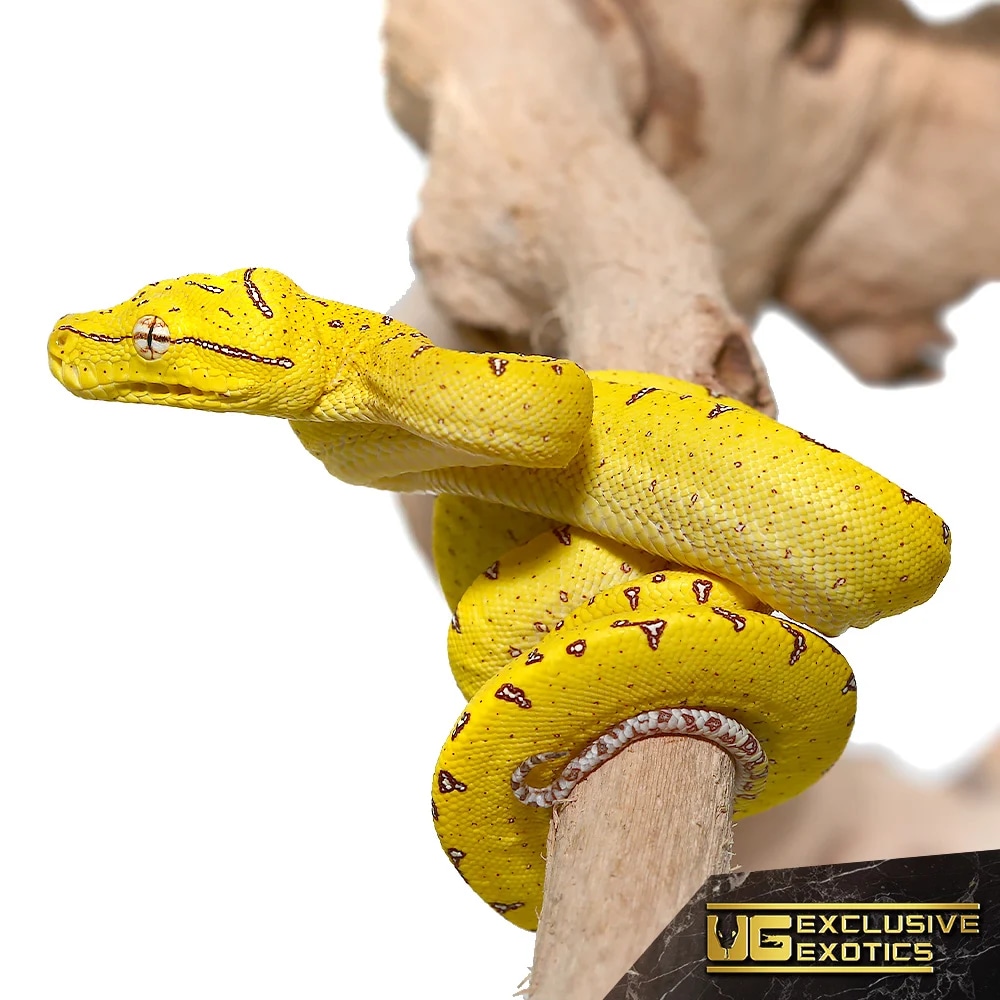Biak
Type: Other
Issues: N/A
First Produced In: Unknown
Availability: Common
Last Updated: 2021-12-27
Do you have any suggestions or corrections for this article?
Click here to contribute feedback
About
History
No history yet.
Appearance
Head
Body
Varying shades of green throughout the body, with mismatched circles along the dorsal and spotting of yellow along the sides.
The back is more pointed than most other GTPs.
The color palette can be very large. For example, there are animals that are simply green in color, others with a very high proportion of yellow, which is also relatively normal for this species, white-blue animals, only yellow or mustard-colored animals. However, most animals remain green with a few yellow scales on the head and a few on the rest of the body.
Controversy
Animals with a high proportion of yellow are often referred to as Lemontree. However, this term is incorrect and you can read the reason for this in Greg Maxwell’s book. Correctly, such an animal should be called high yellow. Nevertheless, caution is advised because, as already mentioned above, Biak animals could naturally be adorned with many yellow scales. When purchasing a Biak mold, one should also note that the animals could have completed their color change at around 3 years of age. Such animals should not then be called high yellow, because after all it is still the young plumage.
Proven Lines
Insanity Line
Related Traits
No known related traits


















